A Russian Shahed drone slammed into the neighbour’s house while Oleksandr was sitting at his computer, lost in whatever he was watching. With his headphones on, he didn’t hear the drone’s buzzing as it got closer. “It was twenty to ten in the evening,” he remembers. “Out of nowhere, there was this flash, and then a muffled bang—the glass shattered, and all the windows blew out… I thought, that’s it, I’m done. I jumped up and ran to see how everyone else was doing.”
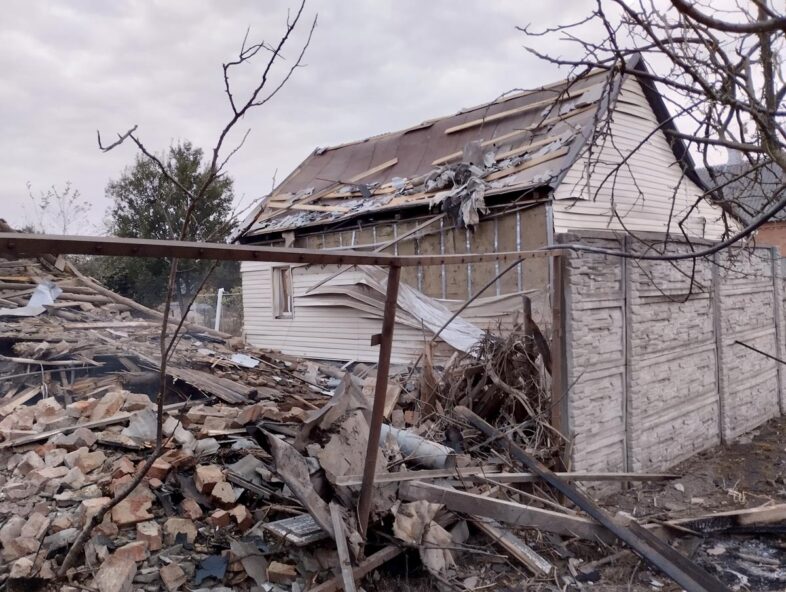
Surprisingly, Oleksandr and his family came away without a scratch. His wife was in a shelter, and their son, Serhiy, had just enough time to hide. Earlier, when the shooting kicked off over the city, Serhiy had stepped outside to watch the Shaheds being targeted by artillery. He stood there for a bit, hoping to see something exciting, but all he spotted was a distant glow over Baranivka as something fell. “I had just walked into the yard,” he says, “when I heard this flying sound, rattling, and then it went silent. It was terrifying—I knew something was coming down. I bolted inside, locked the door, and then it exploded.”
“If he had been in his room,” Serhiy’s father recalls, “it would have been the end.” With both windows facing the street, the blast wave surged through them without hesitation, obliterating the fence and the gates behind which their car was parked. Even if Serhiy had stayed in the yard, the outcome would have been just as devastating. The inner fence separating their property from the neighbours was completely blown away.
In the chaos, the family had to climb out of the house through the window since the front door was jammed shut, and the room filled with smoke in no time. Neighbours rushed over, calling out, “Are you alive?” To which they responded, “Yes, we’re alive.” The Shahed drone had wreaked havoc, damaging four homes in total. One house burned to the ground, but thankfully, no one lived there. The three others nearby remained standing, but each sustained significant damage. The home closest to the blast lost both its roof and ceiling, not to mention all the shattered windows.
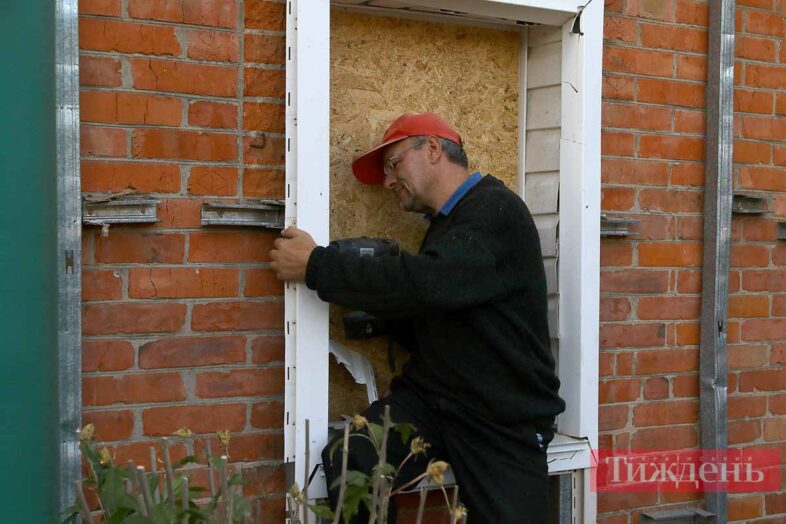
Incredibly, the people inside the house were also nearly unscathed. “We were already lying in bed when it exploded,” Svitlana recalls. “The window was blown out, and the curtain caught fire, but my husband quickly threw it out, and somehow we weren’t injured. We survived by a miracle. Look,” she gestures to a photo, “there are flowerpots scattered on the bed, soil everywhere, and glasses shattered. I can’t even begin to understand how all this happened. Did we jump up after the blast, or did it all fall on us? It’s all a blur.”
That evening, on October 6, chaos engulfed the skies over Sumy. Russian drones rained down on the city, and as locals fought back, several enemy drones crashed into homes. According to local authorities, three neighbourhoods suffered damage, with one private house completely destroyed and 45 others impacted, alongside three educational institutions and two vehicles. Four people were injured, including an 11-year-old child. Yet, behind the stark statistics lies a deeply human story that can’t be captured by numbers alone.
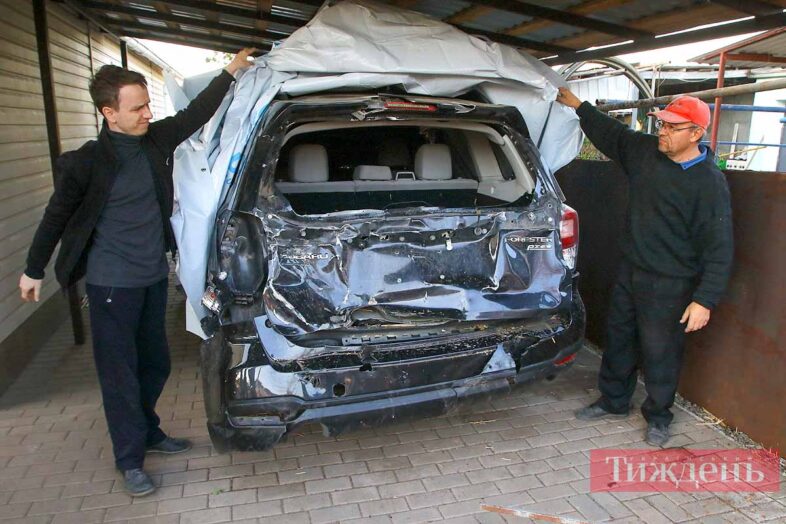
The bench outside the house hit by the Shahed was usually alive with chatter and laughter in the evenings, often filled with children playing. On that fateful night, a mother recalls that her son and his friends left the area just 20 minutes before the explosion, and that’s what saved them. Had they lingered, the outcome could have been catastrophic. “Now, whenever there’s an air raid alert, my son Sashko bolts home in fear, fully aware of what could happen,” she shares. Svitlana adds, “Since that incident, we’re terrified to even step into the bedroom, let alone sleep there. My daughter, who’s 15, hasn’t spent a single night at home since—it scared her so deeply that she sleeps at relatives’.”
Many in the neighbourhood believe it was sheer luck that the Shahed crashed into an empty house in such a densely populated area. “If it had fallen just 10 metres short, right here between our homes,” Oleksiy reflects, “it would have been the end for both my neighbours and my family. And if it had veered 10 metres the other way, three people would have been caught in the blast.”
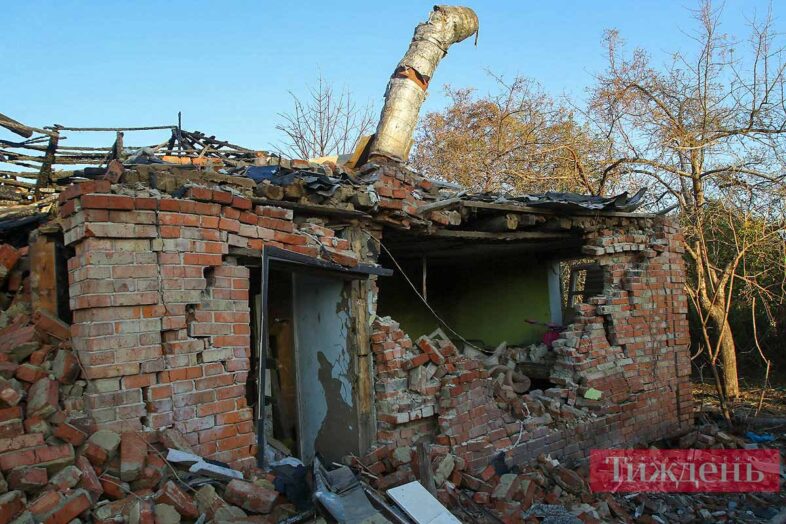
In Sumy, shelling has become a grim part of daily life. The air raid sirens blare so frequently that they often go unnoticed. Residents report that only a handful of acquaintances still seek refuge in shelters, primarily those with haunting experiences from the past. During my time in the city, the sirens sounded nearly ten times but strikes within Sumy itself remain relatively rare, which likely contributes to the residents’ growing sense of complacency. Of course, this feeling is relative—it all depends on what one is compares it to.
Until recently, the situation had been somewhat stable, according to the staff at the Department of Power Engineering at Sumy Polytechnic, which experienced a KAB [Russian guided bombs – ed.] strike in early September. “Shelling has picked up significantly since August,” they explain. “At first, it was just a few distant bangs, but now the intensity has ramped up. May was particularly tough. As soon as evening falls, the chaos begins. Nine o’clock hits, and you can almost set your watch by it.”
“I used to dash to the corridor,” recalls Tamara Hryhorivna, the department’s secretary and senior lab technician. “I even ventured into the basement, despite it being scarier down there with the six atmospheres of water pressure and sewage. These days, I just pull the curtains to block out the flashes in the sky. Even my dog has stopped reacting. Before, at the slightest noise, he would bolt under the bed, but now he merely lifts his head and then lowers it again. When the war first began, we were filled with fear; we thought it would all be over soon. Now, those hopes have faded. Everything has dragged on, and we’ve learned to cope. It’s like our bodies have developed a defence mechanism.”
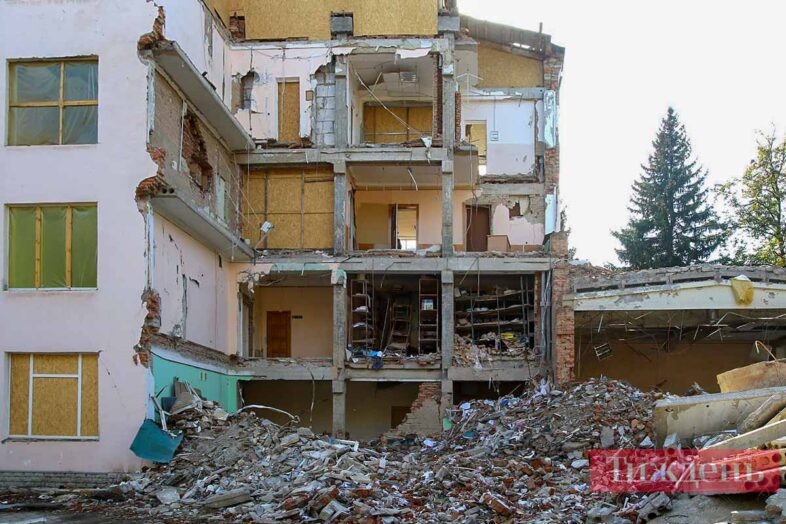
During the Russian strike on the university, Tamara Hryhorivna’s office was one of the hardest hit in her department. A concrete slab had literally crushed her desk, while in the neighbouring offices, some cabinets were left with their glass intact—though not all of them, of course. When she first saw the damage to her office, she felt a mix of shock and anger. It hurt to witness the destruction of so much work crafted by so many people in an instant.
“We had gathered everything there,” she recalls. “Our students helped out, too. We have such a close-knit department. We took care of the stands, the repairs, the flowers—always ensuring we had a little extra on hand, just in case… And now it’s all gone.” When the emergency services arrived, she asked if they could at least help her find a pack of paper. They laughed and said, “What are you even thinking about?” But she shrugged it off, noting, “Well, if we’re still alive, we have to keep going.”
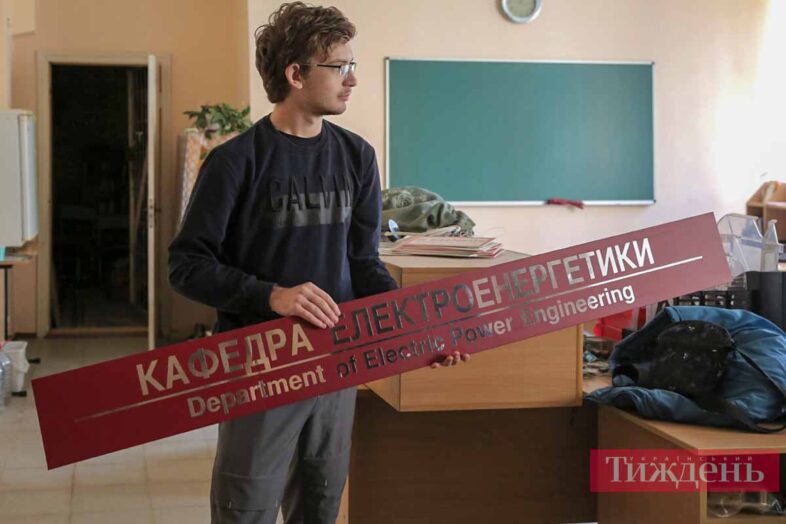
The strike on the university occurred in the evening, around 10 p.m., according to Eduard, who lives nearby in the dormitory and came over to help salvage what he could. At the time, the only person inside was the security guard, who seemed to have escaped injury by finding a safe place to hide. Eduard remembers that he was playing board games with friends when the explosion happened. They were so engrossed in the game that they didn’t even want to stop afterward. What was the point? The damage was done.
The following morning, students, lecturers, and concerned residents began to swarm the university, all asking the same question: “How can we help?” “The support was overwhelming,” the department staff noted. “But perhaps the most upset was our cleaner; she had just washed all the windows right before the strike.”
Eduard is convinced that the university was intentionally targeted. He recalls seeing countless reports of attacks on educational institutions, not only in Sumy but also all over Ukraine. It weighed heavily on him. His colleagues share a different perspective, suggesting that Russians are focused on hitting social infrastructure to inflict maximum damage and break the spirit of the Ukrainian people. “They’re not just attacking buildings; they’re trying to terrorise us,” Eduard says, his voice filled with emotion. “It’s pure terrorism, and it’s chilling to think about.”
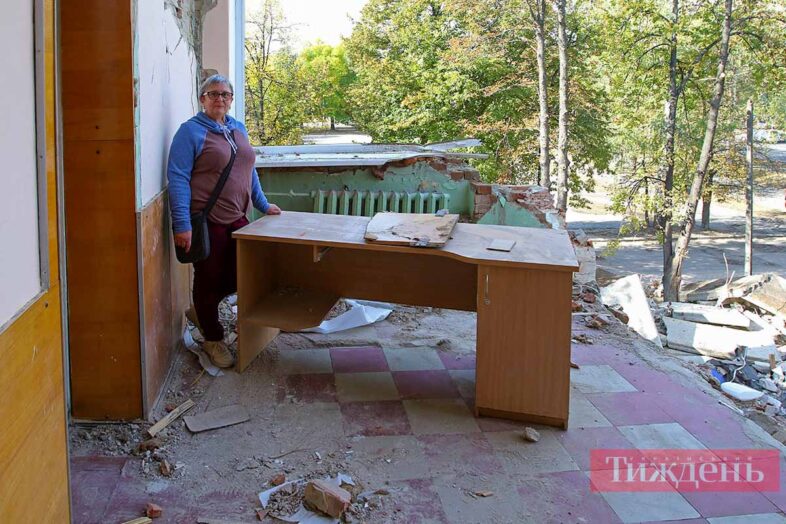
Just a few weeks ago, the Saint Panteleimon City Hospital, located right next to the university, became the target of a deliberate shelling by Shahed drones. The attack was chillingly calculated, with the first drone striking in the morning when the hospital was at its busiest. It hit the operating room on the second floor, but fortunately, no one was inside at the time. However, the emergency department below was filled with people, and tragically, a nurse lost her life in the chaos. Rescuers and police rushed to the scene, working tirelessly to extract victims and clear debris. Just forty minutes later, a second Shahed hit the roof of one of the hospital buildings, followed shortly by a third drone that missed its intended target and struck a nearby five-story residential building instead. The strikes resulted in ten deaths and twenty-two injuries.
A week earlier, a similar attack targeted a geriatric home housing over two hundred elderly residents. Many were injured, some critically, and one person later succumbed to their injuries. The facility was rendered uninhabitable, forcing all residents to be relocated to other institutions. Just two weeks before that, a strike devastated a social and psychological rehabilitation centre for children, along with a nearby orphanage. The attack was intentional and catastrophic, completely destroying the building and injuring eighteen people, including six children.
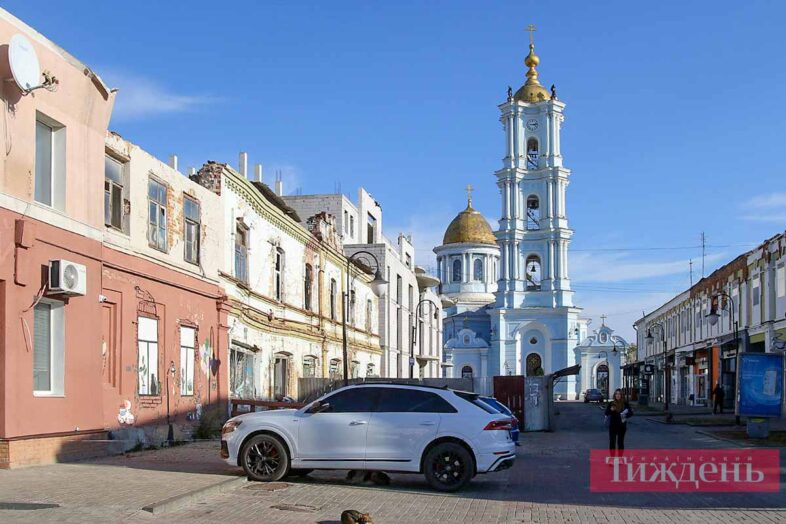
The outskirts of Sumy and the surrounding villages bear the brunt of relentless shelling. While the city primarily faces the threat of drones, with the occasional rocket or guided bomb, the villages are subjected to a continuous barrage. The constant artillery fire adds to their suffering, with the border looming just a stone’s throw away—about 25 kilometres to the north and around 30 to the east. Sometimes, the cannonade rages on for days. The enemy starts shelling a village at dawn, and we respond, resulting in a deadly game of ping-pong that stretches until evening.
Villages within 5 to 10 kilometres of the border experience the worst of this turmoil. Since the beginning of the war, they have been relentlessly terrorised, with the border line swiftly morphing into a front line. Entire communities are being obliterated and reduced to mere names and ruins. The situation escalated even further after our army advanced into neighbouring Kursk, seizing control of parts of Russian territory, intensifying the destruction in these borderlands.
Living under these conditions is far from safe, prompting many to leave their homes, yet a surprising number choose to return. There’s even a curious phenomenon dubbed “evacu-tourism.” In this scenario, residents from border areas that endure 10 to 15 shellings a day—where stores and services have long ceased to function—are evacuated to Sumy. Here, they receive some aid before heading back home under fire. Officially, though, they’re no longer considered residents of their villages. According to the documentation, they’re listed as living in Sumy, and this status creates a conundrum for international organisations that aim to assist border communities. When it comes to delivering essential supplies like firewood, these organisations have to deny help, as on paper, these individuals are classified as evacuated and thus ineligible for assistance.
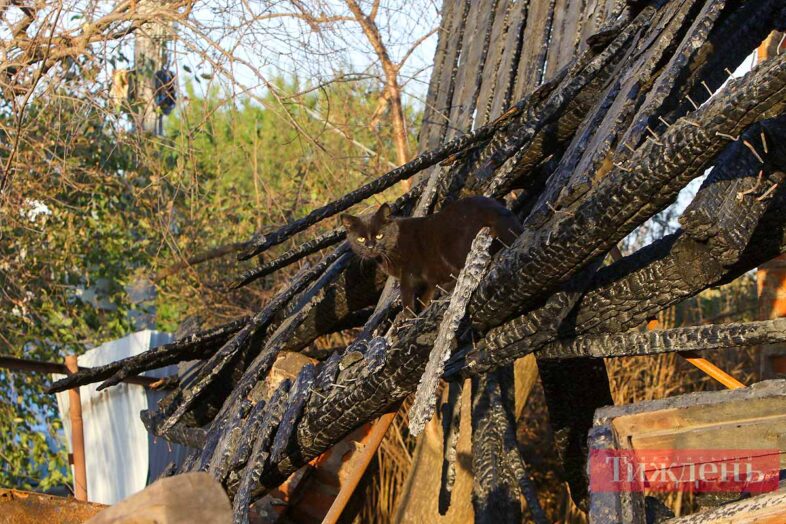
Despite the turmoil, Sumy doesn’t quite feel like a regular frontline city. If you overlook the sirens, alarms, shelling, power outages, and online schooling, the visual landscape appears relatively serene: shops and cafés buzz with activity, people stroll the streets with smiles, pigeons flit about, and cars fill the thoroughfares. Yet, beneath this façade lies a stark deception. The atmosphere can shift in an instant—a missile can strike without warning, shattering the illusion of normalcy in a heartbeat. Just as I was putting the finishing touches on this piece, I received news of another attack. A missile hit a residential area, while a drone targeted local infrastructure. This is the harsh reality that residents face daily.

